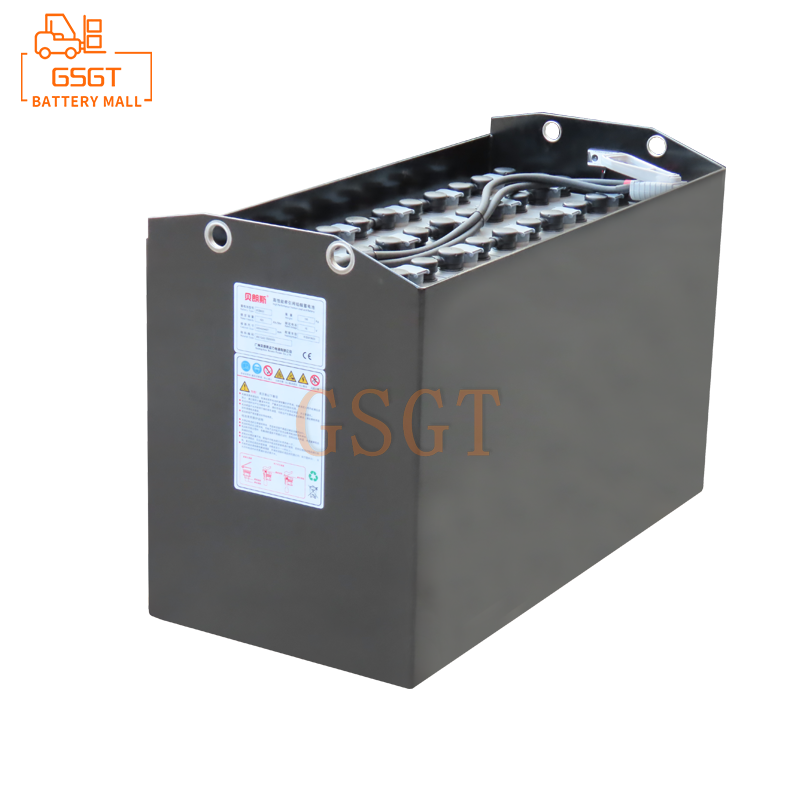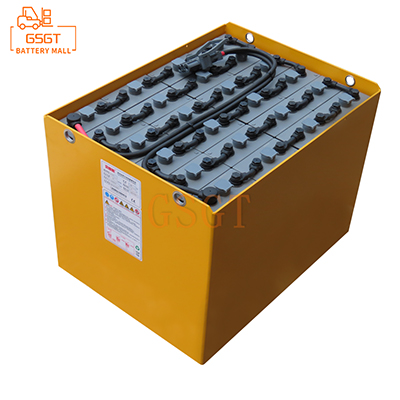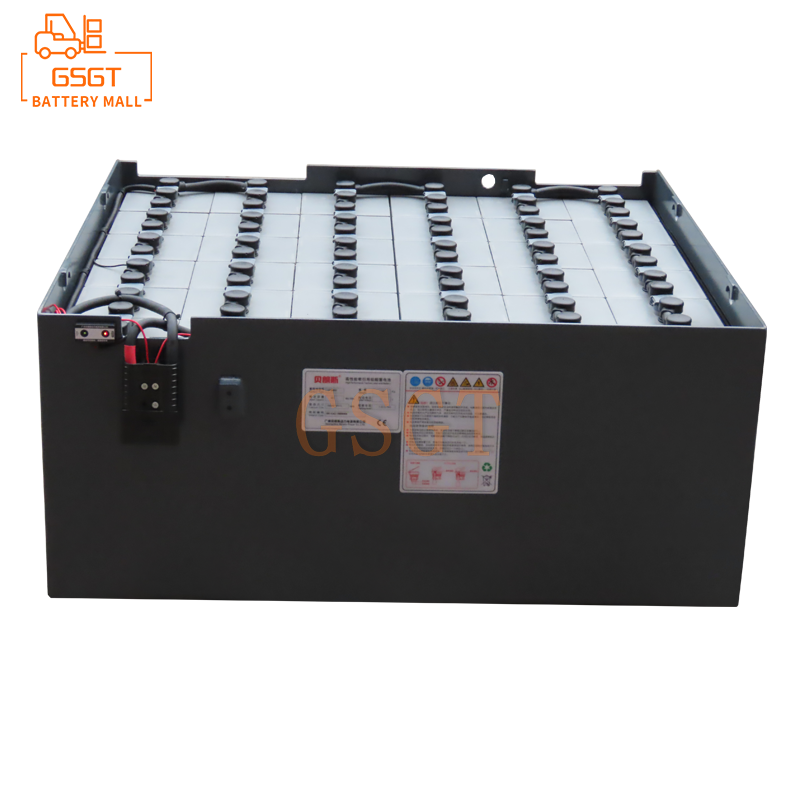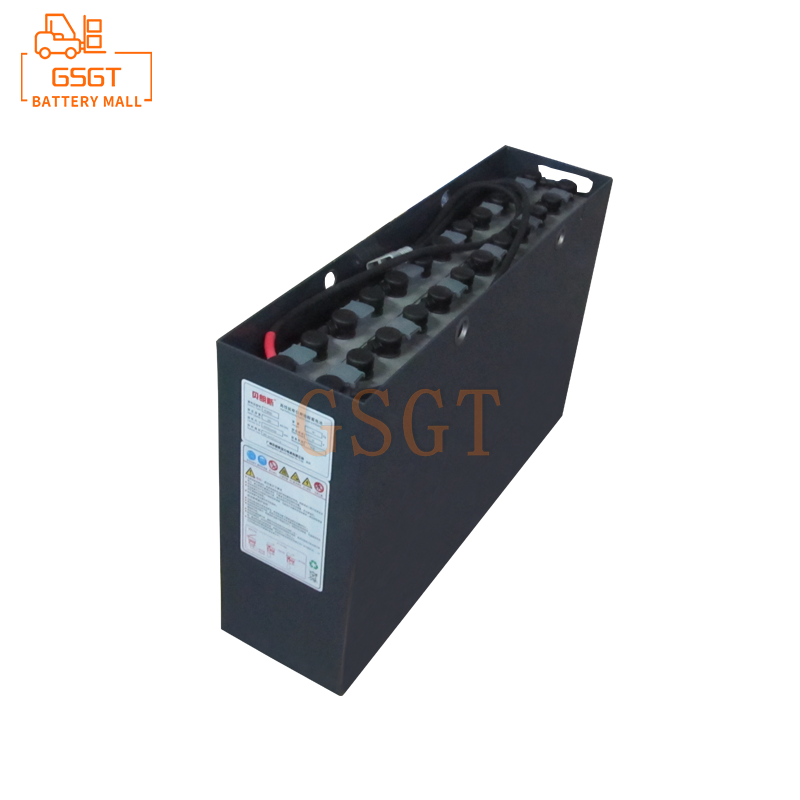Time:2025-05-07 13:43:46
Browse:626
Abstract
This article deeply explores the multi-faceted influences of forklift lead-acid batteries on the operational efficiency of forklifts. By analyzing the performance characteristics, charging and discharging characteristics, life cycle and other factors of lead-acid batteries, this paper expounds how they affect the operation efficiency in aspects such as the power output, endurance capacity, maintenance time and operation cost of forklifts. At the same time, based on actual cases and the current situation of the industry, strategies for optimizing the use of lead-acid batteries in forklifts and improving operational efficiency are proposed, aiming to provide valuable references for forklift user enterprises and related practitioners, and to help enhance the overall operational efficiency in fields such as logistics and warehousing.
1. Introduction
In modern logistics, warehousing and industrial production and other fields, forklifts, as important handling equipment, undertake key tasks such as loading and unloading, stacking and transporting goods. The operational efficiency of forklifts is directly related to the production and operation costs of enterprises as well as the speed of logistics turnover. As the core power source of electric forklifts, the performance and condition of lead-acid batteries play a decisive role in the operational efficiency of forklifts. With the continuous improvement of environmental protection requirements and the gradual expansion of the market share of electric forklifts, in-depth research on the impact of lead-acid batteries in forklifts on operational efficiency is of great practical significance for optimizing forklift usage and enhancing the competitiveness of enterprises.
2. Basic Characteristics and Working Principle of Forklift Lead-Acid Batteries
Lead-acid batteries are mainly composed of positive plates, negative plates, separators, electrolyte and casings, etc. Its working principle is based on REDOX reactions. During the discharge process, lead dioxide at the positive electrode and lead at the negative electrode react with sulfuric acid in the electrolyte, converting chemical energy into electrical energy to provide power for equipment such as forklift motors. During the charging process, through the effect of an external power source, the above reaction proceeds in reverse, converting electrical energy into chemical energy for storage. This characteristic of mutual conversion between chemical energy and electrical energy determines the crucial position of lead-acid batteries in the operation of forklifts.
Lead-acid batteries have the advantages of mature technology, relatively low cost and good high-current discharge performance, which can meet the high current requirements of forklifts during starting, acceleration and heavy-load operations. However, it also has shortcomings such as low energy density, long charging time, and limited cycle life. These characteristics will affect the operational efficiency of forklifts in different aspects.
3. The Specific Impact of Lead-Acid Batteries on the Operational Efficiency of Forklifts
(1) Power output and endurance
1. **Power Output**: The capacity and discharge characteristics of lead-acid batteries directly affect the power performance of forklifts. When the battery is fully charged, it can provide a stable and strong current, enabling the forklift to have good starting performance, climbing ability and load-carrying capacity. However, as the battery power is gradually consumed, the terminal voltage of the battery drops, and the output current will also decrease accordingly, resulting in a gradual weakening of the forklift's power. For instance, when handling heavy loads, a forklift with insufficient battery power may encounter difficulties in climbing slopes, a significant reduction in traveling speed, and even fail to complete the assigned handling tasks, thereby prolonging the single operation time and lowering the overall operation efficiency.
2. ** Endurance Capacity ** : The endurance capacity of lead-acid batteries is determined by their capacity and is usually expressed in ampere-hours (Ah). The working hours and intensity of forklifts are limited by the battery's endurance. In a continuous operation scenario, if the battery capacity is small, the forklift needs to be charged frequently, resulting in operation interruption. In addition, low-temperature environments can significantly reduce the performance of lead-acid batteries, with their driving range possibly dropping by 30% to 50%, further affecting the operational efficiency of forklifts in cold seasons.
(2) Charging Time and Operation Continuity
1. ** Conventional charging time ** : One of the major disadvantages of lead-acid batteries is their relatively long charging time. Traditional lead-acid batteries are charged by constant current and constant voltage. It usually takes 8 to 10 hours or even longer to go from a completely discharged state to a fully charged state. This means that forklifts need to wait for a relatively long time after each charge before they can be put back into use. In some enterprises with high requirements for the continuity of operations, in order to ensure the uninterrupted operation, multiple sets of batteries have to be equipped and used alternately. This undoubtedly increases the equipment procurement cost and management difficulty of the enterprises.
2. ** Impact of Fast Charging ** : Although fast charging technology is currently applied to lead-acid batteries, it can have a negative impact on battery life. Frequent fast charging can lead to problems such as sulfation of battery plates and accelerated evaporation of electrolyte, shortening the battery's service life. Meanwhile, the cost of fast charging equipment is relatively high, and enterprises need to have the corresponding power supply conditions. Furthermore, even with fast charging, the impact of charging time on work efficiency cannot be completely resolved, as the battery's endurance after fast charging may not reach the level of conventional charging.
(3) Maintenance, servicing and downtime
1. ** Daily Maintenance ** : Lead-acid batteries require regular maintenance and care, including checking the electrolyte level and specific gravity, adding distilled water or special lead-acid battery replenishment fluid, and cleaning the battery surface and terminals, etc. If not maintained properly, it will lead to a decline in battery performance and even malfunction. For instance, if the electrolyte level is too low, the plates will be exposed to the air, causing sulfation of the plates and affecting the charging and discharging performance of the battery. These maintenance tasks require a certain amount of time, and during the maintenance process, the forklift cannot operate normally, thereby reducing the operational efficiency.
2. ** Fault Repair ** : As the usage time increases, lead-acid batteries will inevitably encounter various faults, such as aging of the plates, short circuits, and open circuits. Once a malfunction occurs, the forklift needs to be shut down for maintenance. The length of the maintenance time depends on the severity of the fault. Simple faults may be resolved within a few hours, while complex ones may take several days. During the maintenance period, the forklift was unable to participate in the operation, which had a significant impact on the production and operation of the enterprise. In addition, replacing faulty batteries also requires a certain amount of time and cost, further reducing operational efficiency and increasing operating costs.
(4) The Correlation between Cost Factors and Operational efficiency
1. ** Purchase Cost ** : The purchase cost of lead-acid batteries accounts for a large proportion of the overall equipment cost of forklifts. The prices of lead-acid batteries of different capacities and performances vary greatly. When making a choice, enterprises need to comprehensively consider the operation requirements and cost budget of forklifts. If a battery with a smaller capacity or poorer performance is chosen to reduce the purchase cost, it may lead to low operational efficiency of the forklift and increase the long-term operating costs instead.
2. ** Usage Cost ** : The usage cost of lead-acid batteries includes electricity charges, maintenance costs, and replacement costs, etc. Frequent charging will increase the electricity bill. Regular maintenance, servicing and replacement of parts require certain costs. When the battery reaches its service life, the cost of replacing it with a new one is also relatively high. These cost factors will indirectly affect enterprises' decisions on forklift operation arrangements. For instance, in order to reduce the usage cost, enterprises may decrease the operation time of forklifts or lower the operation intensity, thereby affecting the overall operation efficiency.
4. Strategies for Optimizing the Use of Lead-acid Batteries in Forklifts and Enhancing Operational Efficiency
(1) Choose the battery reasonably
Enterprises should select lead-acid batteries of appropriate capacity and performance based on the actual operation requirements of forklifts, such as operation duration, load conditions, and working environment. In scenarios with high work intensity and long working hours, large-capacity and high-performance batteries should be selected to ensure the forklift's endurance and power output. At the same time, the brand and quality of the battery should be taken into consideration. Choose a supplier with a good reputation and reliable product quality to ensure the stability and service life of the battery.
(2) Optimize charging management
1. ** Develop a reasonable charging plan ** : Based on the operation schedule of the forklift and the discharge condition of the battery, develop a scientific and reasonable charging plan. Try to avoid overdischarging and overcharging the battery. It is more appropriate to charge it when the battery power remains at 20% to 30%. At the same time, arrange the charging time reasonably and charge during non-peak working hours to reduce the impact on working efficiency.
2. ** Adopt intelligent charging technology ** : Introduce intelligent charging devices, such as chargers with automatic detection and adjustment functions. These devices can automatically adjust the charging current and voltage based on the battery's status, achieving optimized charging, reducing charging time, while protecting the battery and extending its lifespan. In addition, the intelligent charging system can also monitor and manage the charging process, making it convenient for enterprises to grasp the charging status of batteries.
(3) Strengthen maintenance and upkeep
1. **Establish a complete maintenance system**: Develop a detailed maintenance and care system for lead-acid batteries, clearly defining the maintenance cycle, content, and standards. Regularly inspect and maintain the battery, promptly identify and solve potential problems, and ensure that the battery is in good working condition.
2. ** Training Operators ** : Provide training to forklift operators on the maintenance and care of lead-acid batteries, enabling them to master the correct operation methods and maintenance skills. For instance, operators should learn to correctly check the electrolyte level and specific gravity, and understand the significance of battery surface cleaning, etc. By enhancing the maintenance awareness and skill level of operators, battery failures caused by improper operation can be reduced and downtime can be lowered.
(4) Explore new technologies and solutions
1. ** Research on New Battery technologies ** : Pay attention to the technological development trends of lead-acid batteries and explore new lead-acid battery technologies, such as lead-carbon batteries. Lead-carbon batteries add activated carbon to the negative electrode material, which enhances the battery's charging and discharging performance as well as cycle life, and can effectively improve the operational efficiency of forklifts. In addition, attention can also be paid to other new battery technologies, such as the application prospects of lithium batteries in the forklift field, to provide references for the equipment upgrading of enterprises.
2. ** Introduction of battery rental and recycling services ** : For some small and medium-sized enterprises, the cost of purchasing multiple sets of lead-acid batteries is relatively high. It is possible to consider introducing battery rental services, renting suitable batteries based on actual operation needs to reduce the cost of equipment purchase. At the same time, actively participating in battery recycling programs and properly handling used batteries is not only beneficial to environmental protection but also can bring certain economic benefits and reduce the operating costs of enterprises.
5. Conclusion
As the core power component of electric forklifts, the performance and condition of lead-acid batteries for forklifts have a crucial impact on the operational efficiency of forklifts. From multiple aspects such as power output, endurance, charging time, maintenance and cost factors, the characteristics of lead-acid batteries to varying degrees restrict or promote the operational efficiency of forklifts. Enterprises should fully recognize these impacts and take measures such as rationally selecting batteries, optimizing charging management, strengthening maintenance and upkeep, and exploring new technologies and solutions to maximize the performance advantages of lead-acid batteries, improve the operational efficiency of forklifts, reduce operating costs, and thereby enhance their own competitiveness in the fierce market competition. With the continuous development and innovation of battery technology, more efficient and environmentally friendly forklift power solutions are expected to emerge in the future, further promoting the development of industries such as logistics and warehousing.
The above article analyzes the impact of forklift lead-acid batteries on operational efficiency from multiple dimensions and proposes targeted optimization strategies, hoping to provide valuable references for related fields.

$2450

$3405

$4045

$1060

MESSAGE
Professional And Efficient
Security
Affordable Price
Professional Services